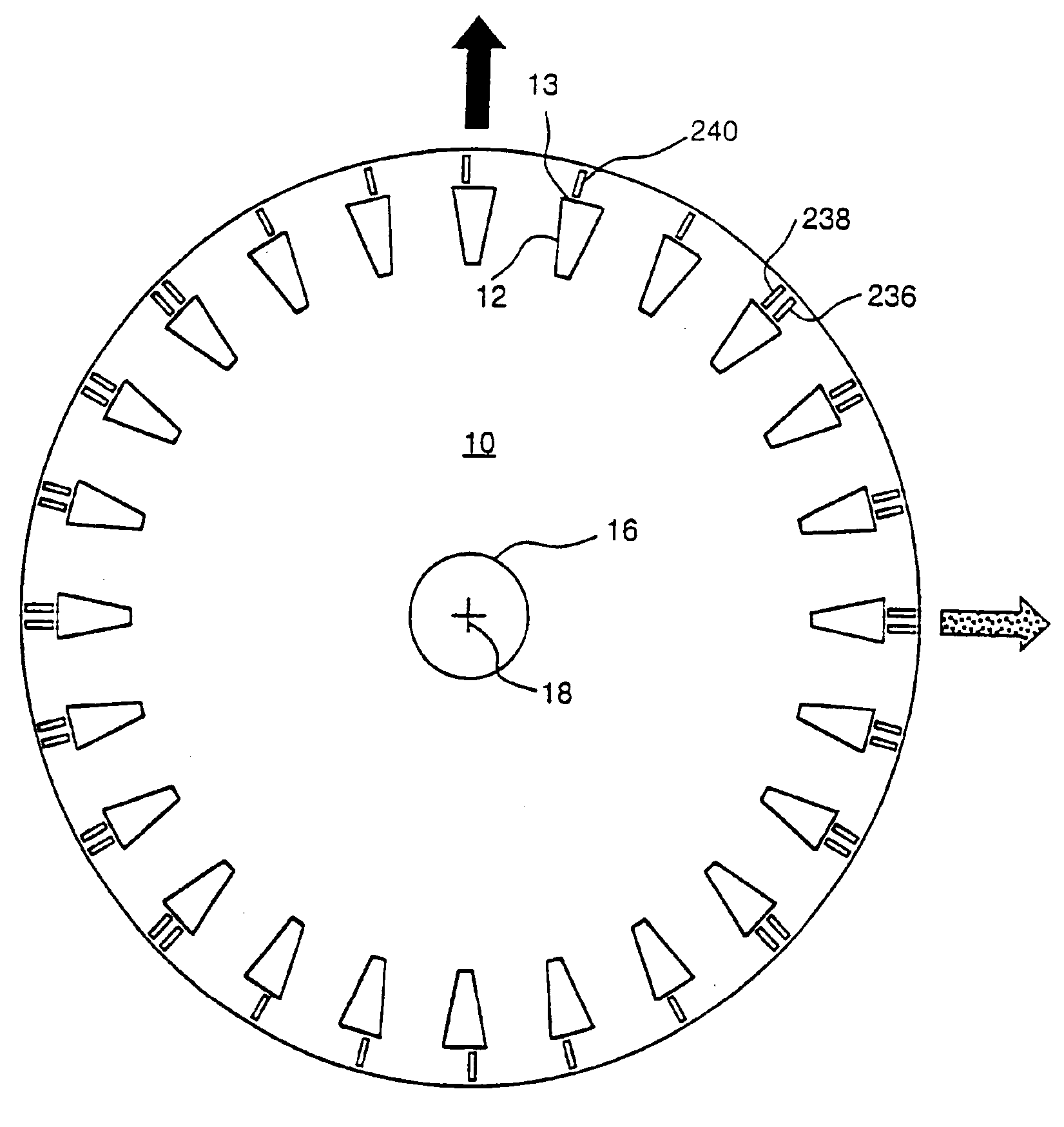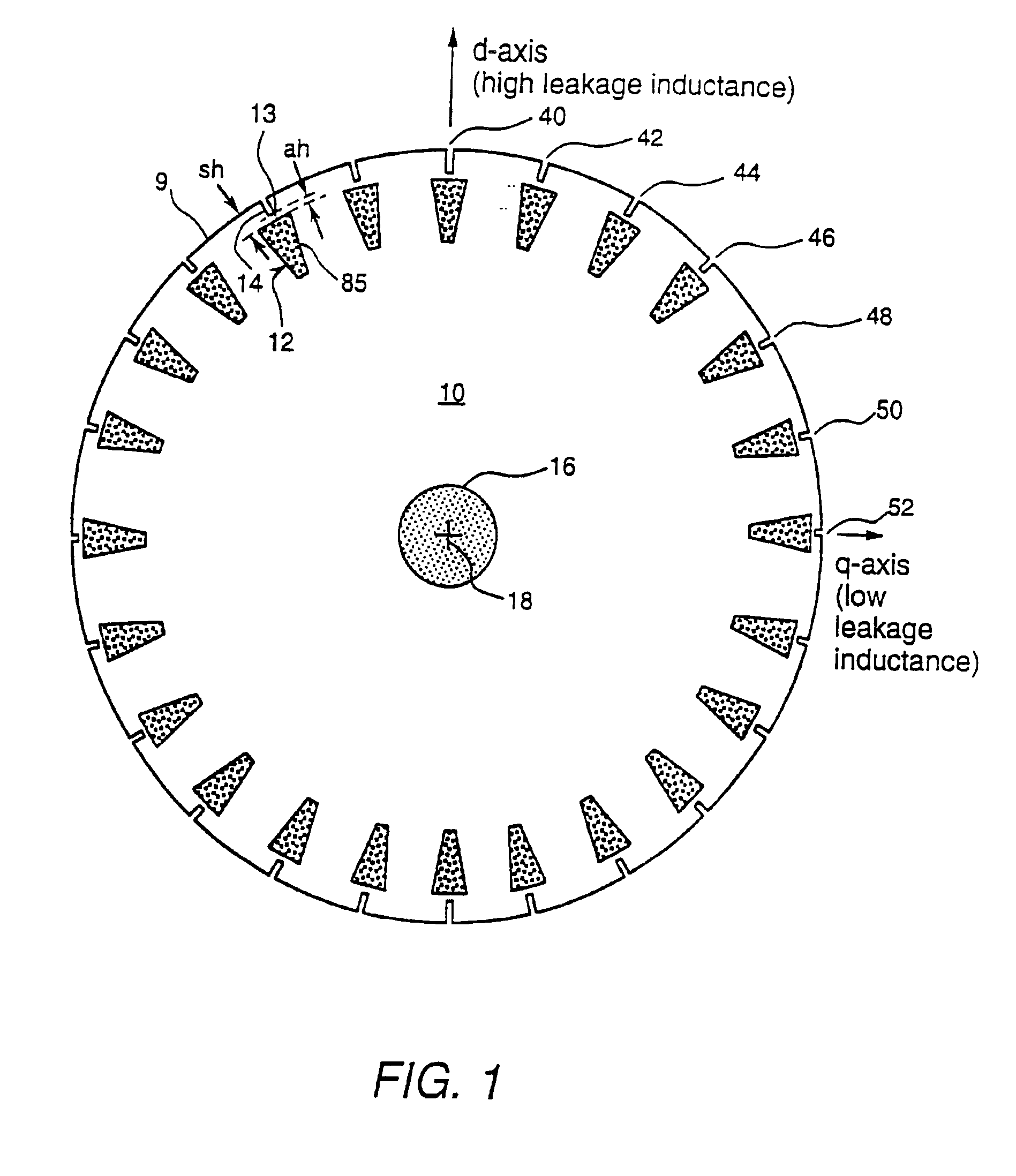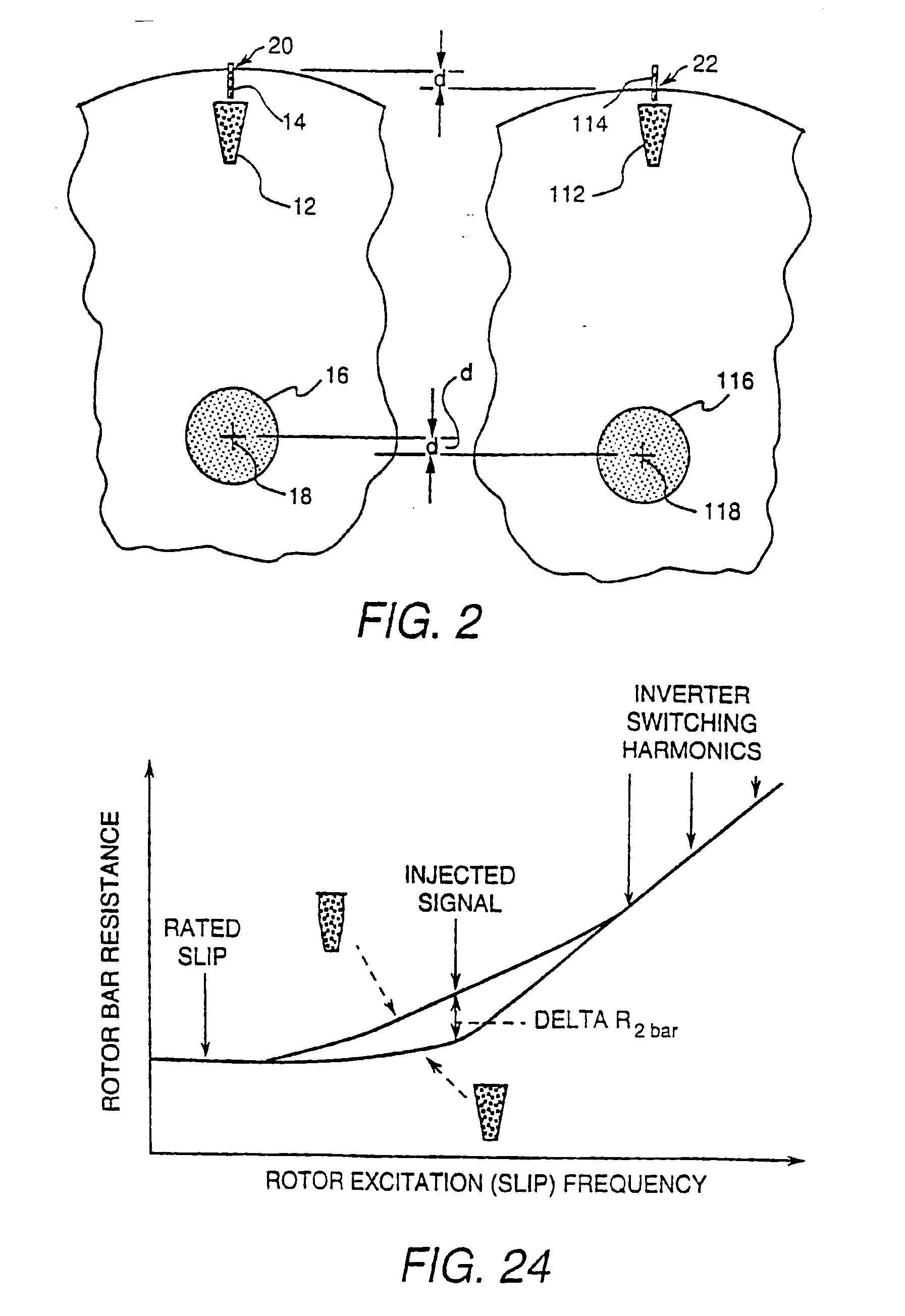Sensorless control induction motor rotor slot shapes and fabrication methods
a technology of induction motor and rotor, which is applied in the direction of rotors, synchronous motors, manufacturing cage rotors, etc., can solve the problems of not disclosing manufacturing methods or rotor designs, and achieve the effect of cost-effectiveness
- Summary
- Abstract
- Description
- Claims
- Application Information
AI Technical Summary
Benefits of technology
Problems solved by technology
Method used
Image
Examples
Embodiment Construction
Some of the rotor slot shape and rotor bar embodiments of the present invention relate to inductance modulation, whereas others of the embodiments of the present invention relate to resistance modulation. Typically on larger machines (such as machines with greater than ten horsepower, for example), inductance modulation is most useful due to the fact that a high percentage of the total impedance results from inductance. On smaller machines (such as machines with less than ten horsepower, for example), inductance modulation, resistance modulation, or a combination of inductance modulation and resistance modulation can be useful for sensorless motor control. Preferably, for inductance modulation and particularly for resistance modulation, the cross sectional areas of each rotor slot shape are within one percent of each other such that the DC resistances of each bar are essentially identical. A spatial variation in the DC resistances will create undesirable torque ripple at the fundame...
PUM
| Property | Measurement | Unit |
|---|---|---|
| Time | aaaaa | aaaaa |
| Diameter | aaaaa | aaaaa |
| Depth | aaaaa | aaaaa |
Abstract
Description
Claims
Application Information
 Login to View More
Login to View More - R&D
- Intellectual Property
- Life Sciences
- Materials
- Tech Scout
- Unparalleled Data Quality
- Higher Quality Content
- 60% Fewer Hallucinations
Browse by: Latest US Patents, China's latest patents, Technical Efficacy Thesaurus, Application Domain, Technology Topic, Popular Technical Reports.
© 2025 PatSnap. All rights reserved.Legal|Privacy policy|Modern Slavery Act Transparency Statement|Sitemap|About US| Contact US: help@patsnap.com



